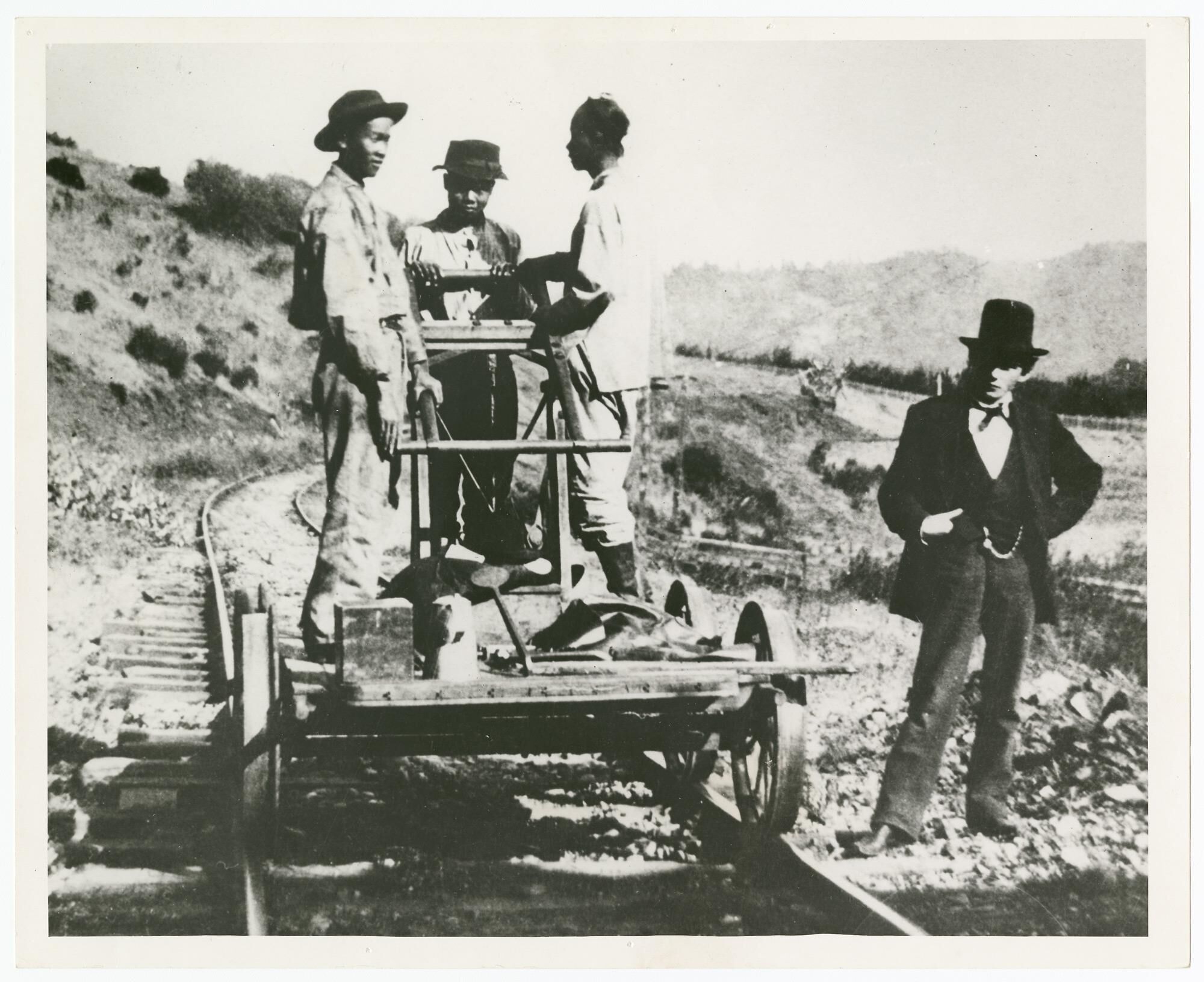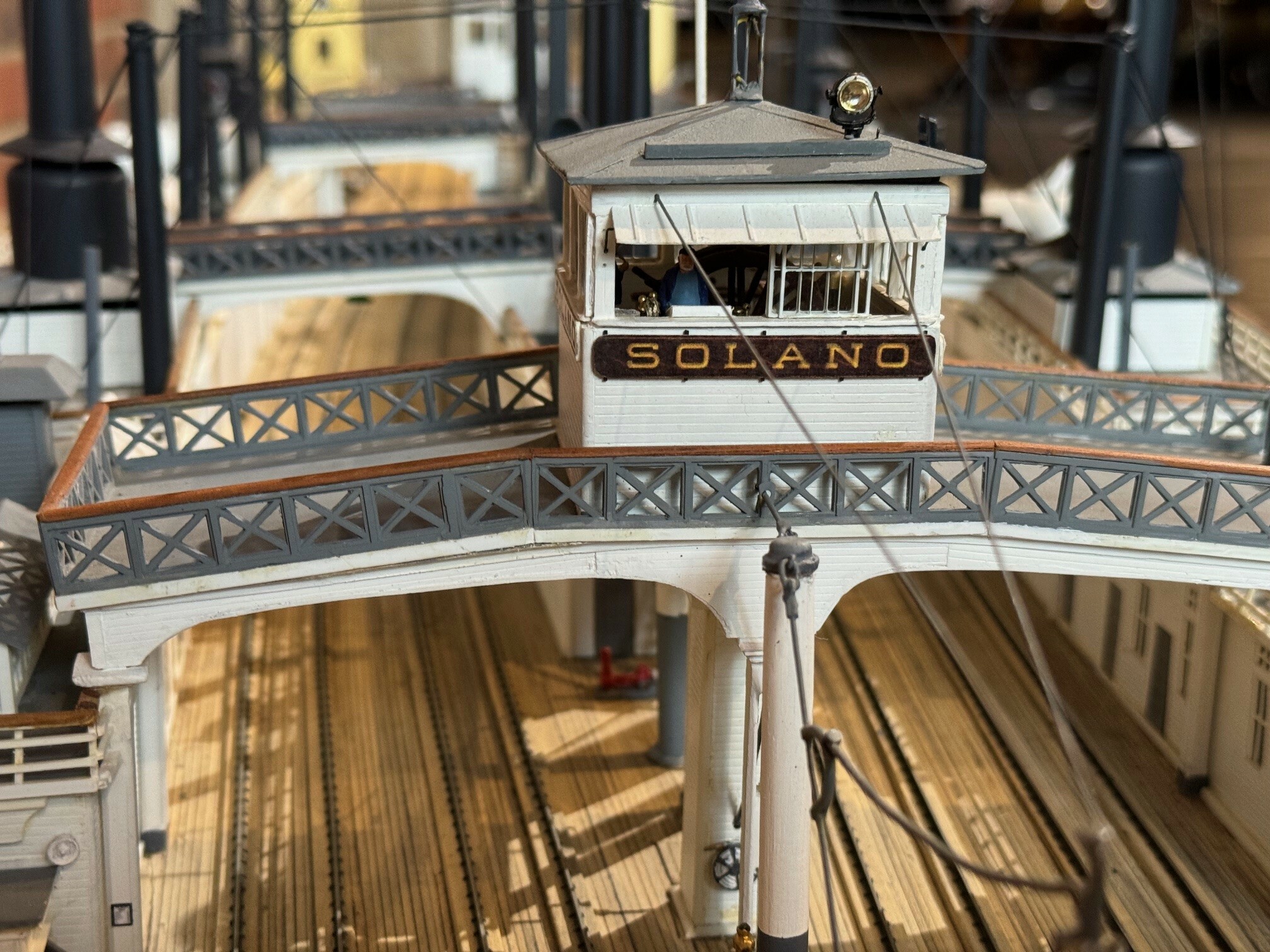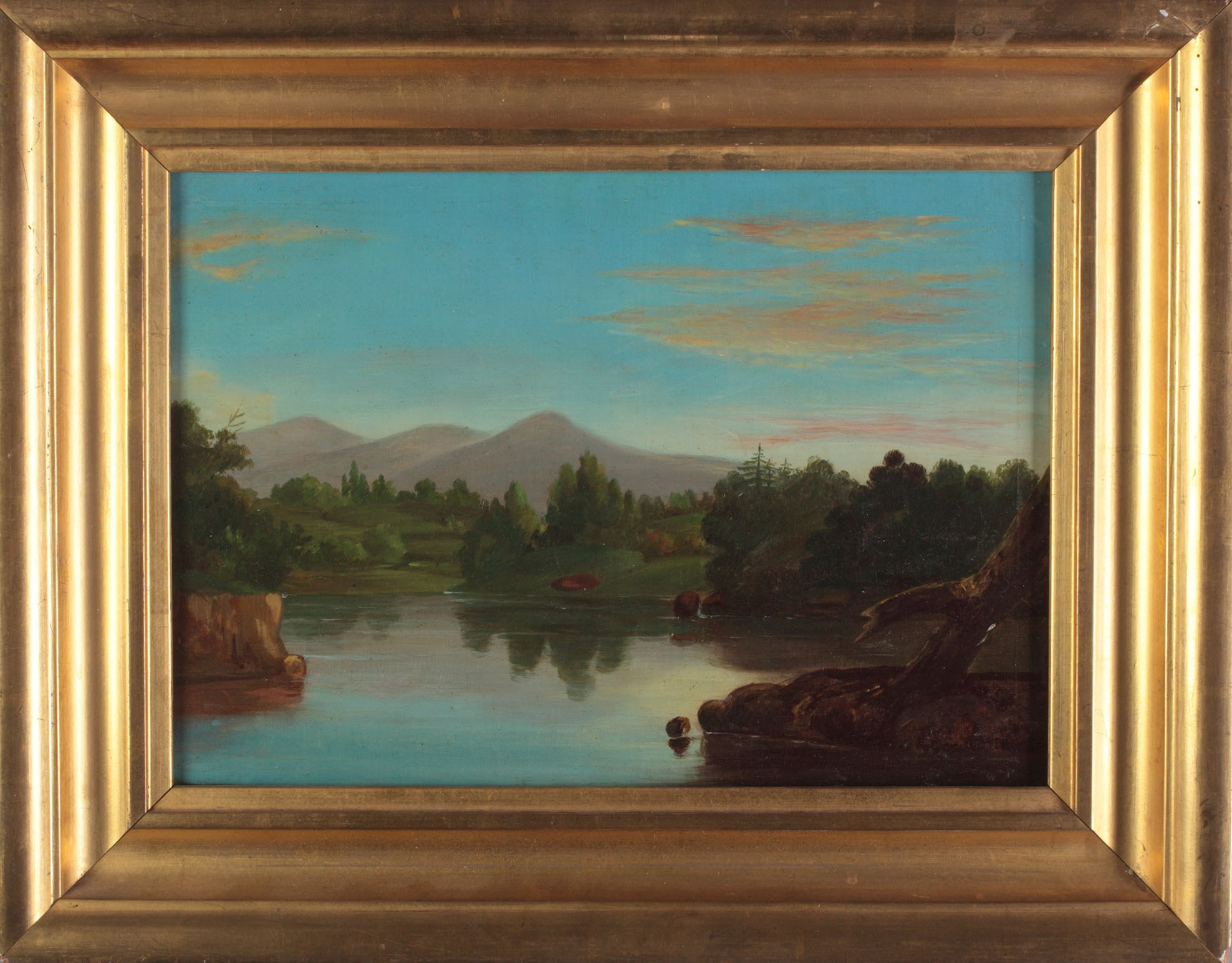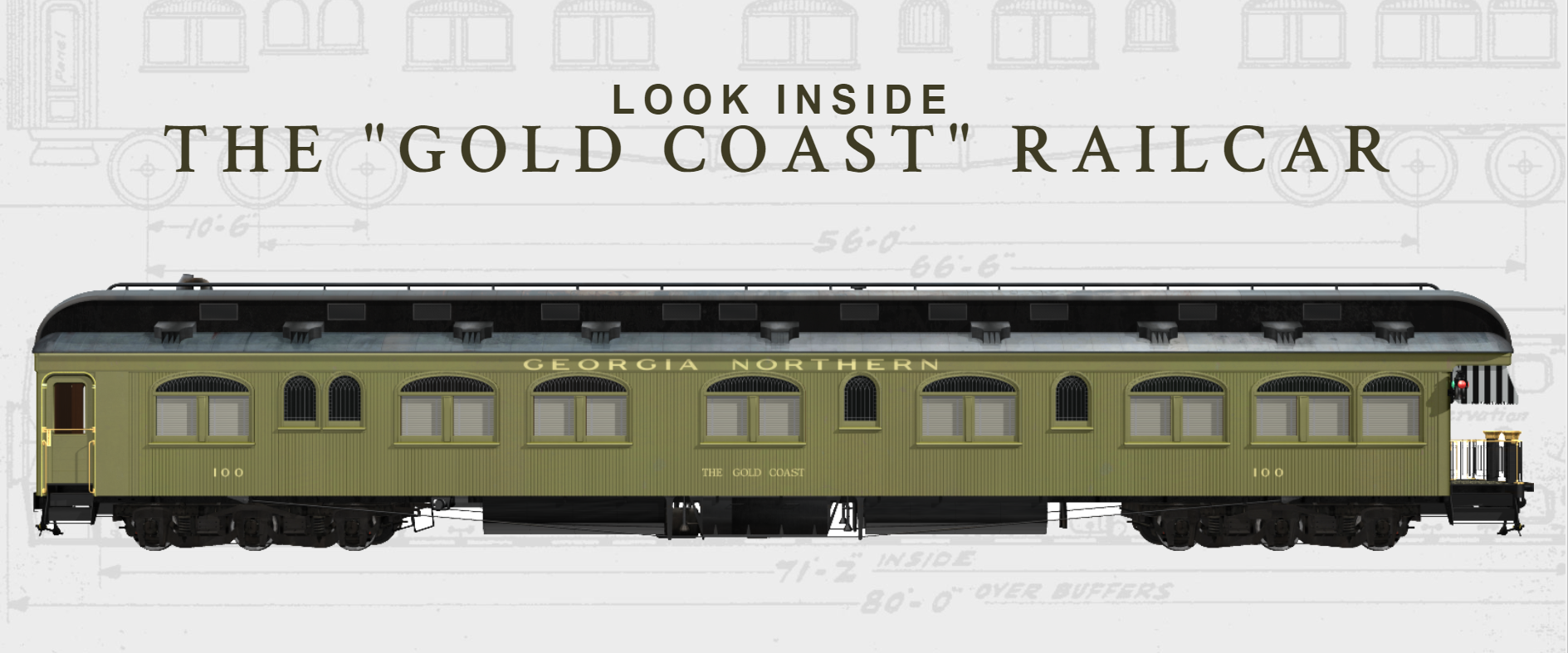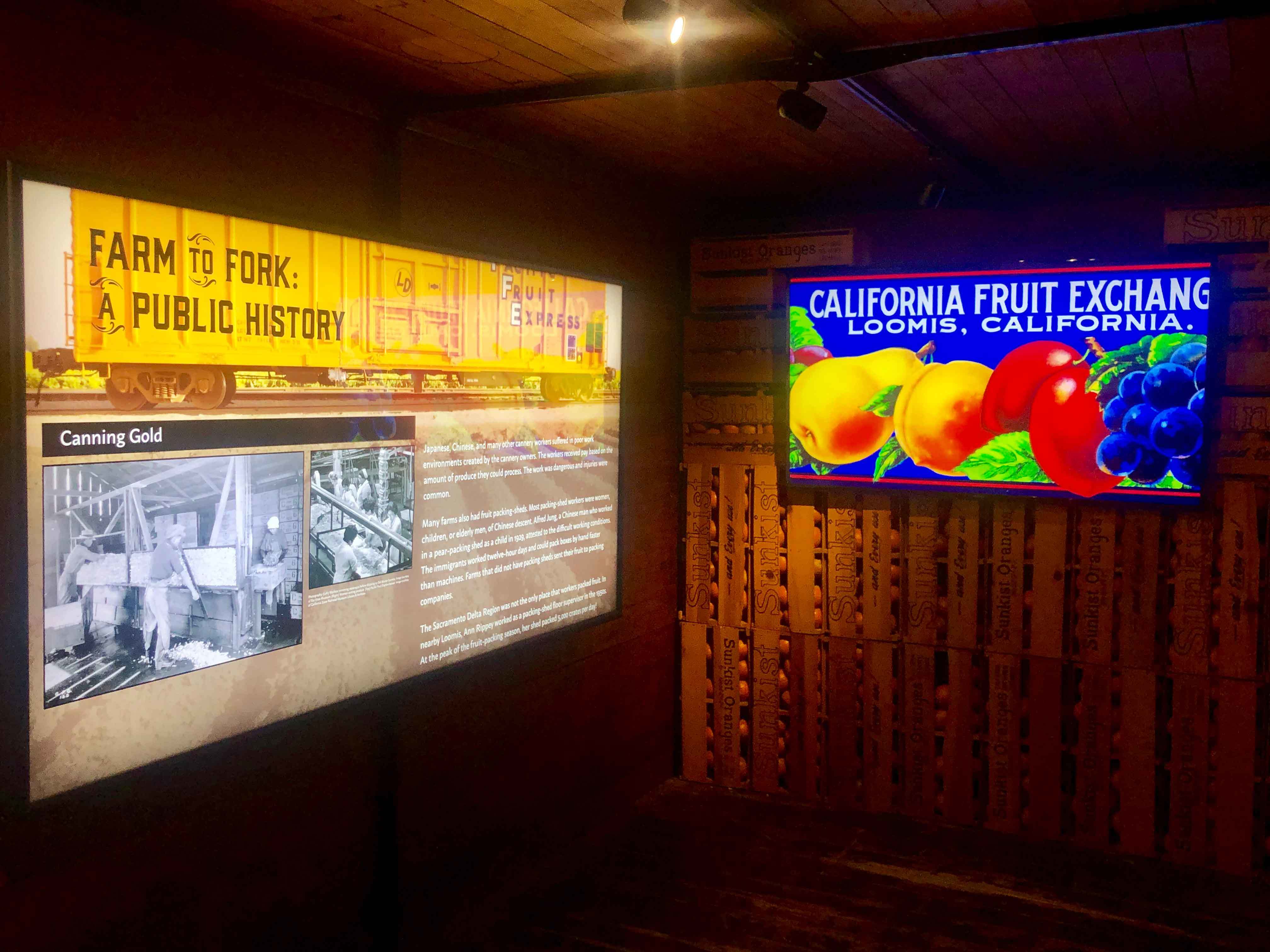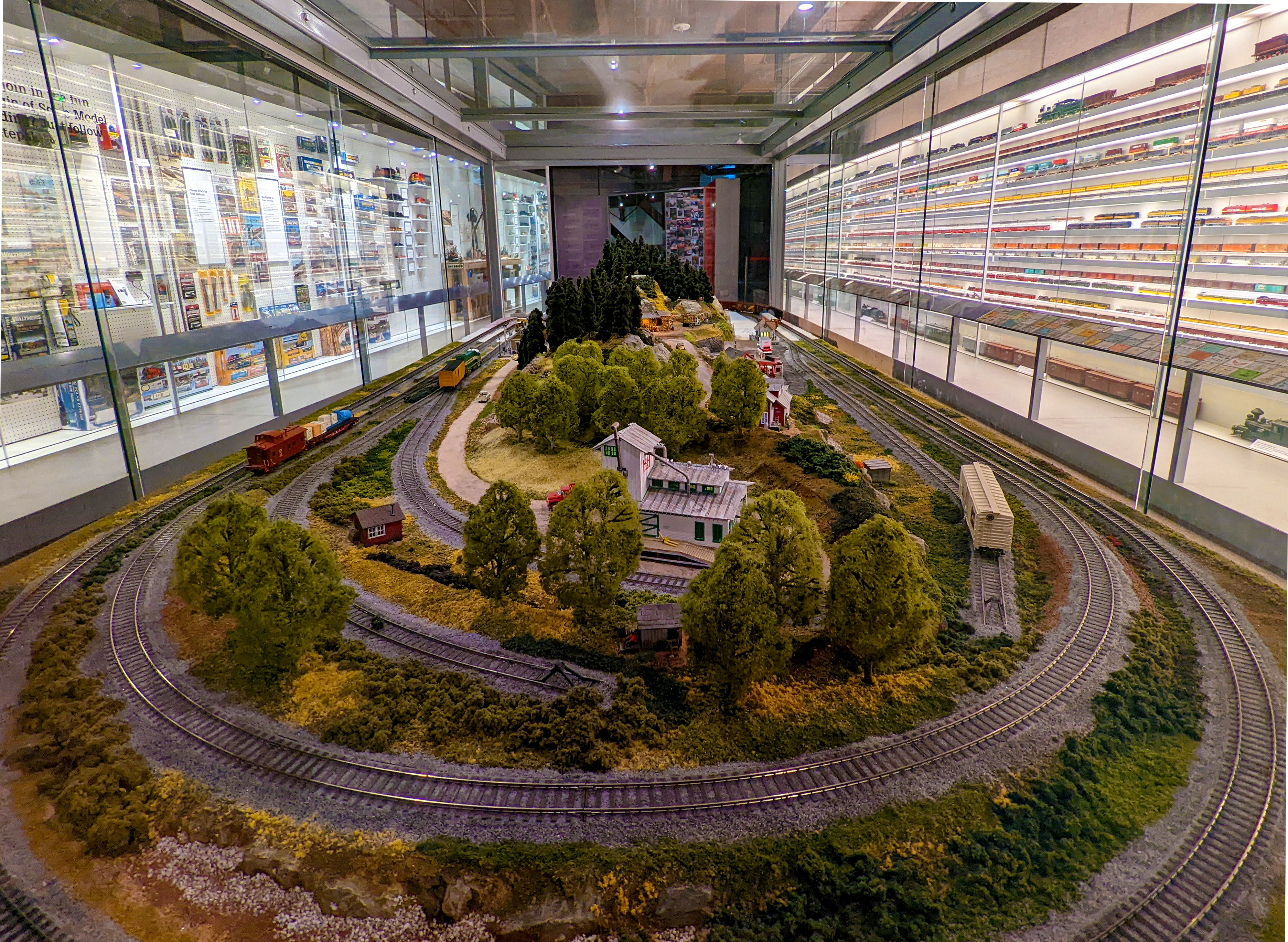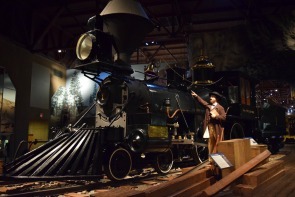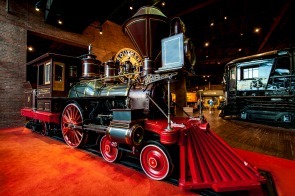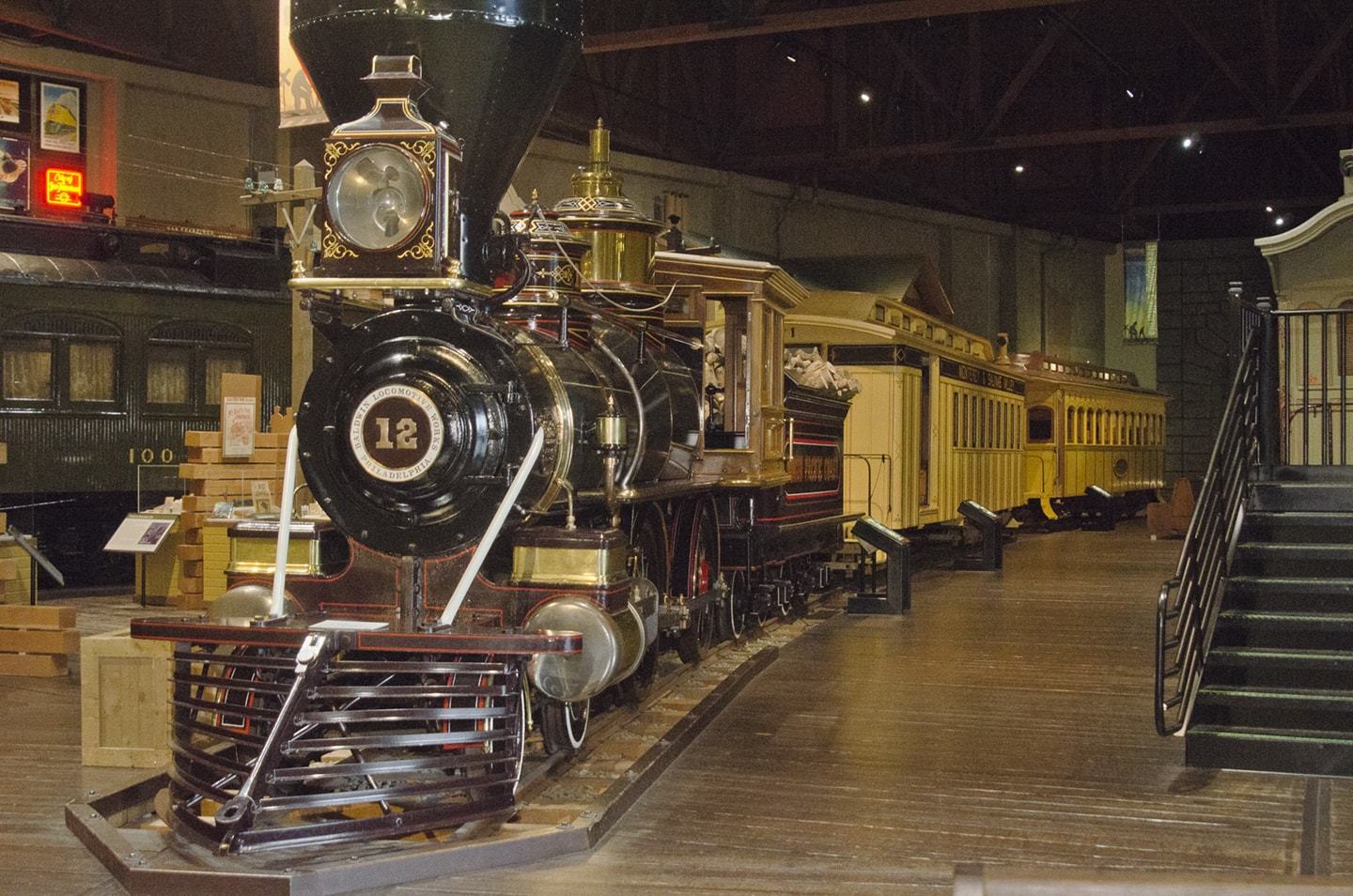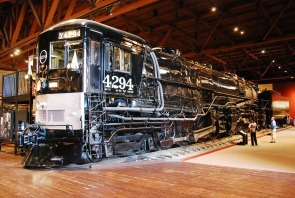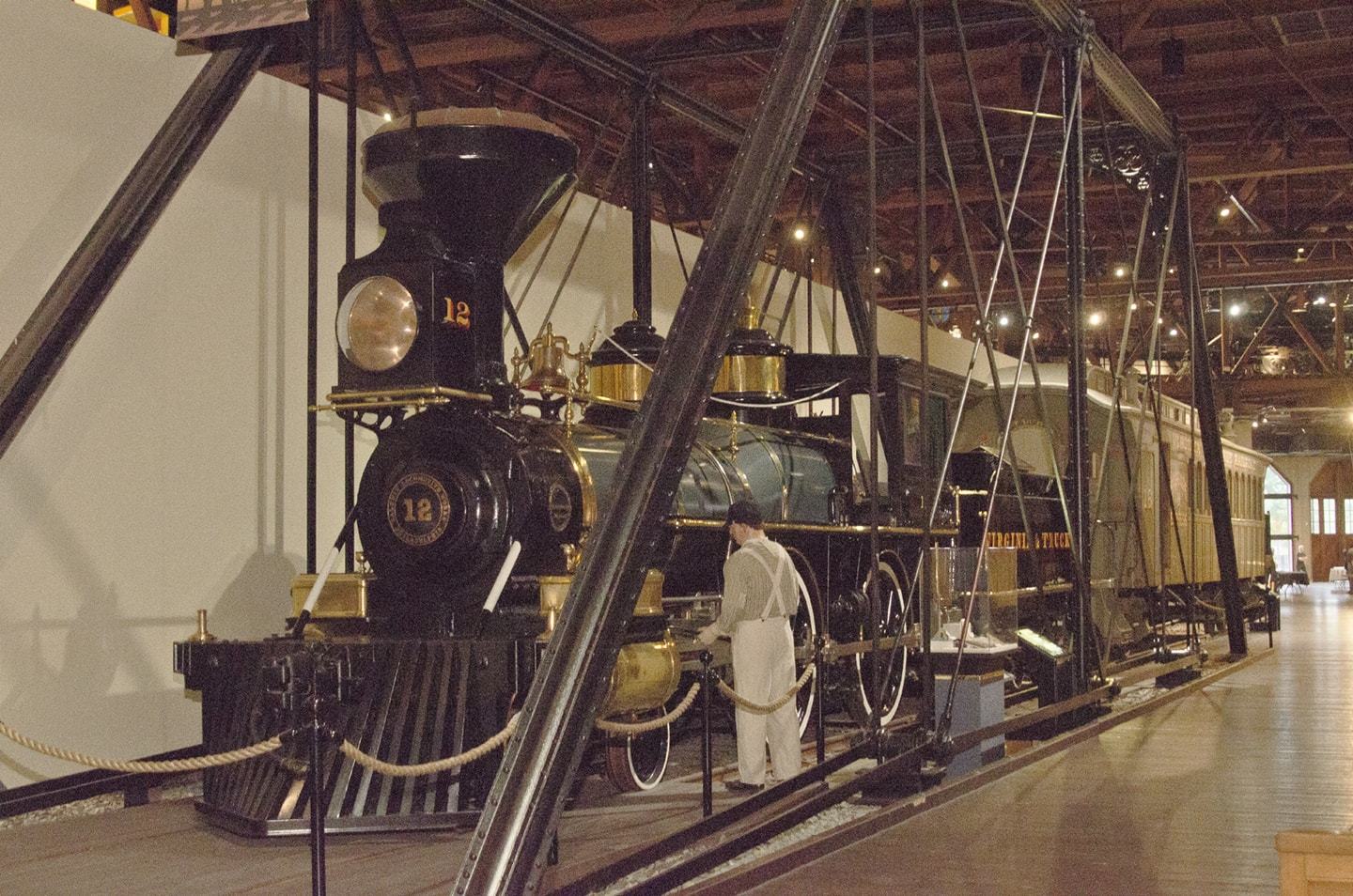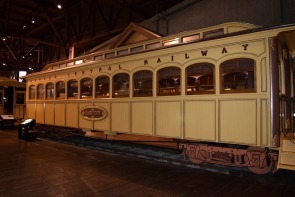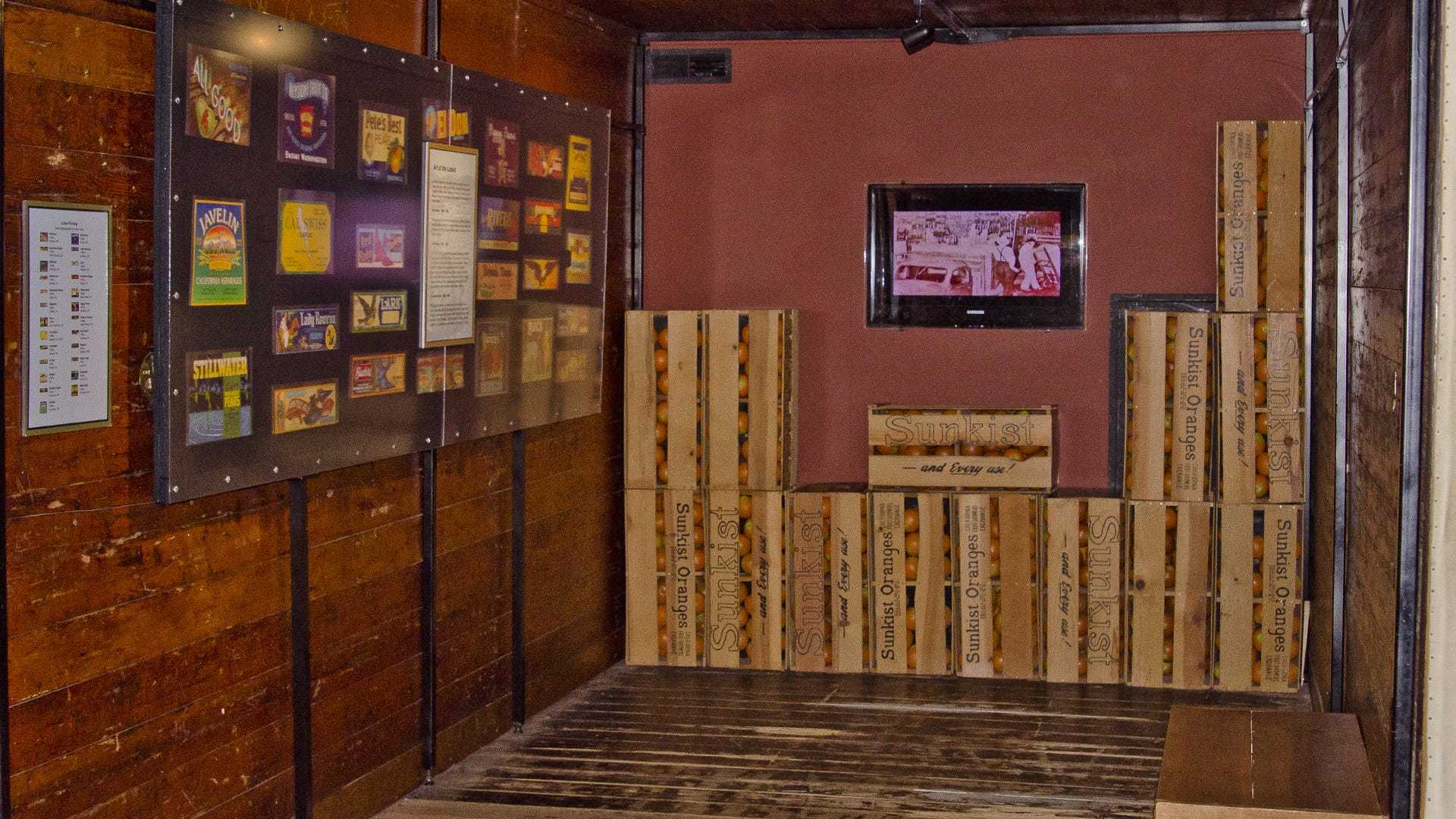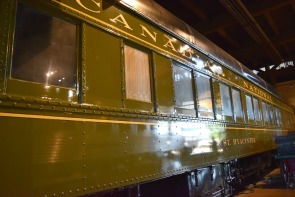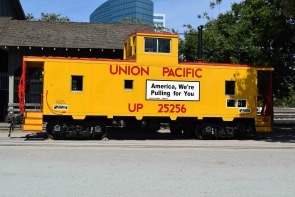During the late 1970s when the Museum staff was researching and assembling artifacts for the Museum of Railroad History, the full-size equipment collection lacked a dining car or other food-service car to interpret one of the most memorable images of classic long-distance passenger train travel. The Museum staff were delighted to find former Santa Fe diner No. 1474 named Cochiti for sale at $7,500 in Tea, South Dakota. The car was built for the Santa Fe Super Chief, judged by many to offer the ultimate in fine dining. The Cochiti was the first in a long line of lightweight Santa Fe dining cars which were the pride of the line, noted for custom menus and fine quality meals prepared by trained chefs.
The 36-seat Cochiti was ordered by Atchison, Topeka & Santa Fe Railway in April 1936, one in a set of eight cars for a new streamlined stainless steel train – the once a week first class Super Chief running between Chicago and Los Angeles. One year earlier, Santa Fe had introduced a new Super Chief schedule of only 39 hours, 45 minutes between Los Angeles and Chicago using diesel-electric locomotives and heavyweight steel passenger cars. Santa Fe’s first lightweight stainless steel coach received in January 1936 was followed three months later by an order for a completely lightweight Super Chief from the Edward G. Budd Manufacturing Company of Philadelphia. Received in April 1937, the eight-car Super Chief began regular service a month later and quickly became the premier train in the system.
All of the cars for this new Santa Fe train were named for Southwest Indian pueblos or tribes: Isleta, Laguna, Acoma. The Cochiti was named for an old Indian-Spanish pueblo which surrounded the mission San Buenaventura de Cochiti, located on the Rio Grande river about 30 miles southwest of Santa Fe and north of Albuquerque, New Mexico. The pueblo dates back more than 700 years. Even today, its population remains largely Native American.
Santa Fe spared no expense on its new train. A team of designers and architects carefully decorated each car. Most interior walls were covered with “Flexwood” panels – a 1/85th-inch thick wood veneer applied to Masonite panels. Exotic woods were used throughout the train as were custom woven Indian-design carpets, upholstery, Art Deco ceiling lighting fixtures and other special touches. The Cochiti originally featured Bubinga wood and chocolate brown moldings with a flesh-colored ceiling. The chairs were burnt-orange leather; the carpet was brick-red and ebony. The railroad commissioned Mary Coulter to design new china for the Cochiti with distinctive designs inspired by ancient pottery makers of the Rio Mimbres Valley in New Mexico. Named Mimbreno, this china remained a trademark of the Super Chief for more than 30 years.
A meal in the Cochiti was a gourmet experience. Presiding over the Cochiti cuisine was 51-year old Peter Tausch, a trusted steward trained in the tradition of Fred Harvey to provide fine dining service aboard Santa Fe dining cars. On the Super Chief’s maiden run on May 18, 1937, the Cochiti’s menu included sirloin steak for two for $2.75, Swordfish Steak Saute for 75 cents, Poached Tranche of Salmon for 70 cents, and Old Fashion Boneless Chicken Pie for 85 cents.
As years went by, newer dining cars ultimately replaced the Cochiti and the car lost its initial special assignment and decor. By the fall of 1946, the Cochiti was in dining car service on the first section of Santa Fe’s California Limited between Chicago and Los Angeles. During the mid 50s, the car was in operation during the summer months for special Chicago-Grand Canyon-Los Angeles tours. The Cochiti’s original “Flexwood” veneer was replaced early on by more easily maintained painted color schemes favoring the southwest. Still, Santa Fe’s standards were high and the AT&SF dining car pool was well maintained throughout its life. Not until its final years in service was the Cochiti’s seating capacity expanded from its original comfortable 36 to a more crowded 46. In 1968, the Cochiti was finally retired and sent to join hundreds of other out-of-service Santa Fe passenger cars stored in Marceline, Missouri. Having easily served more than a million meals over the course of its 31 years of service, the Cochiti’s Santa Fe career had finally ended.
In the summer of 1968, Wayne Kerslake and his father canvassed the Santa Fe’s cars at Marceline to identify equipment for possible use in a stationary railroad-themed restaurant in South Dakota. Two years later the Kerslakes selected the Cochiti for its good condition from among more than two dozen AT&SF diners along with several other pieces at Marceline. Years of preparation ensued. The car was relocated to Tea, South Dakota. Most of the diner’s underframe equipment was removed and the heating and air conditioning system re-plumbed. Unfortunately the restaurant was not successful. After six months of operation in 1977, the venture closed and the equipment was placed on sale. Invoiced to the California State Railroad Museum effective September 21, 1978 for $7,000, the Cochiti was moved west by Burlington Northern along with recently donated Great Northern Railway Post Office Car No. 42. For the next decade, the dining car would remain among the Museum’s stored full-size equipment.
With a generous gift from William R. and Barbara C. Breuner, the Museum began research on the Cochiti in 1989. Over the next several years, miracles were worked as rust, corrosion and fatigue were discovered and painstakingly removed. In the hands of artisans, many of the adverse effects of Santa Fe modifications and a decade of storage in South Dakota were removed. After considerable consultation, Museum staff selected a mid-1940s restoration period for the car which was consistent with the Cochiti’s condition and general arrangement. Archeological evidence confirmed a basic salmon interior color which was carefully masked and reapplied late in 1993.
Today the Cochiti sparkles as it did in the 1940s while in service on the Santa Fe’s Super Chief. One table for four is replete in appropriate Mimbreno-pattern china while the other tables offer an opportunity to examine china settings from the Museum’s collections.
